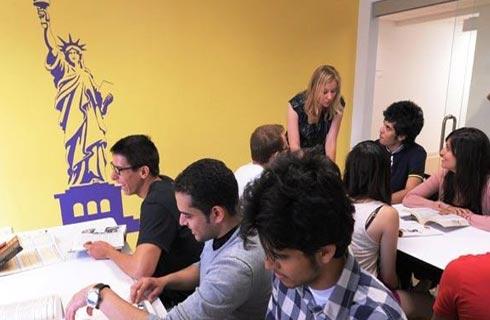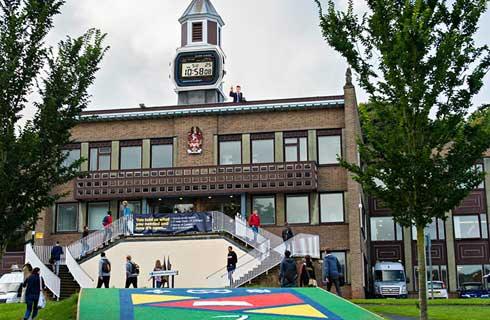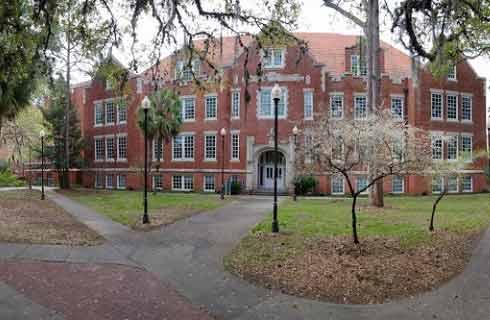地球科学哲学博士-矿物和岩石物理
Doctor of Philosophy in Geosciences - Mineral and Rock Physics

学历文凭
Ph.D.

专业院系
Geosciences

开学时间

课程时长

课程学费

国际学生入学条件
B. A minimum average of B for all undergraduate coursework and a B average for courses in the sciences.
C. Results of the Graduate Record Examination (GRE) General Test.
D. Acceptance by both the Department and the Graduate School.
In special cases, a student not meeting requirements A and B may be admitted on a conditional basis. Upon admission, the student will be informed of the requirements that must be satisfied for termination of this status.
An applicant must have a minimum cumulative grade point average of 3.00 on a 4.00 point scale.
IELTS: Overall score of 6.5, with no subsection recommended to be below 6
TOEFL: 90 for admission to a doctoral program
An applicant must have a minimum cumulative grade point average of 3.00 on a 4.00 point scale.
IDP—雅思考试联合主办方

雅思考试总分
6.5
- 雅思总分:6.5
- 托福网考总分:90
- 托福笔试总分:160
- 其他语言考试:Duolingo - 110
CRICOS代码:
申请截止日期: 请与IDP联系 以获取详细信息。
课程简介
Research in these fields focuses on the investigation of the structure and composition of the Earth, geophysical properties of Earth materials, and the mechanical behavior of the crust and mantle. An important emphasis is the study of high-pressure and high-temperature phases and assemblages, particularly those of relevance to the mantle. In situ measurement of elastic properties, compressibility, and determination of crystal structure complement studies of high-pressure phase relations for constraining models for Earth's mantle and equations of state for mantle phases. Specific projects include determination of ultrasonic wave velocities of minerals and rheological determination of the strength of minerals at the pressure and temperature conditions of the Earth's mantle to depths greater than 500 km. Research initiatives in these areas are closely linked to the activities of the Mineral Physics Institute at Stony Brook and the NSF Consortium for Materials Properties Research in Earth Sciences [COMPRES]. Facilities available in the Department of Geosciences and the Mineral Physics Institute include equipment for ultrasonic interferometry, Brillouin spectroscopy, and multi-anvil apparatus for experiments at high pressure and temperature, these are all integrated with synchrotron X-ray sources at the NSLS. Complete single-crystal and powder X-ray diffraction facilities and transmission electron microscopy and electron diffraction are available. Another important area of study is rock physics, fluid flow and earthquake mechanics. Experimentally and theoretically based, this program focuses on brittle fracture, mechanical compaction of porous rock, strain localization, frictional instability, and hydromechanical behavior. The rock mechanics laboratory includes a triaxial press, an acoustic emission system, and permeameters.
相关申请
 预科
预科 奖学金
奖学金 实习机会
实习机会 在校学习
在校学习 跨境学习
跨境学习 校园授课-线上开始
校园授课-线上开始 在线/远程学习
在线/远程学习
开学时间&学费
学费信息仅供参考,请与IDP联系以获取详细信息
| 开学时间 | 时长 | 学费 | 地点 |
|---|
学校排名

世界排名251
数据源:
泰晤士高等教育世界大学排名
关于纽约州立大学石溪分校

石溪大学(简称 SBU)成立于 1957 年,位于纽约州长岛,是一所充满活力的公立大学。该大学共有约 25000 名学生,其中包括 17000 多名本科生,支持着一个庞大而多元化的学术社区,同时提供丰富而令人兴奋的大学体验。该大学提供广泛的本科、研究生和博士课程,涵盖多个领域。该校在科学、工程和医学方面拥有坚实的基础,并辅以艺术、人文和社会科学课程。热门专业包括生物医学工程、海岸环境研究和计算机科学,每个专业都将学校的前沿研究与基于实践经验的学习相结合,为学生完成学业后从事专业工作做好准备。根据2024年《美国新闻与世界报道 》,SBU 在纽约州公立大学中排名第一,在全美公立大学中排名第 26 位。同一份研究报告还将该大学的社会流动性排在全美第 12 位,并跻身全美十大最多元化大学之列。SBU 是纽约州立大学(SUNY)系统的一部分,并于 2022 年被纽约州州长正式指定为纽约州立大学的两所旗舰大学之一。该大学的长岛校区为学生提供了一系列美丽的海滩,同时还拥有靠近纽约市的所有优势,为学生提供了丰富的教育和课外活动机会。
本校相关课程

妇女与性别研究文学士
学历文凭
Bachelor Degree
开学日期
课程费用总额


技术系统管理理学学士
学历文凭
Bachelor Degree
开学日期
课程费用总额


可持续发展研究文学学士学位
学历文凭
Bachelor Degree
开学日期
课程费用总额


西班牙语言文学学士学位
学历文凭
Bachelor Degree
开学日期
课程费用总额


社会学文学学士
学历文凭
Bachelor Degree
开学日期
课程费用总额


社会工作科学学士学位
学历文凭
Bachelor Degree
开学日期
课程费用总额

其他相关课程

Doctor of Philosophy in Earth Sciences
 达特茅斯学院
达特茅斯学院泰晤士高等教育世界大学排名:180
学历文凭
Ph.D.
开学日期
课程费用总额


Bachelor of Science in Environmental Geoscience
 德克萨斯农工大学学院站分校
德克萨斯农工大学学院站分校学历文凭
Bachelor Degree
开学日期
课程费用总额


Master of Science in Earth Systems Science
 乔治梅森大学-INTO USA
乔治梅森大学-INTO USA学历文凭
Masters Degree
开学日期
课程费用总额


地球/空间科学教育理学学士
 鲍尔州立大学位
鲍尔州立大学位学历文凭
Bachelor Degree
开学日期
课程费用总额


地球系统科学(GGS)理学硕士
 乔治梅森大学
乔治梅森大学泰晤士高等教育世界大学排名:426
学历文凭
Masters Degree
开学日期
课程费用总额


Master of Science in Coastal and Ecological Engineering
 路易斯安那州立大学-Shorelight
路易斯安那州立大学-Shorelight学历文凭
Masters Degree
开学日期
课程费用总额










